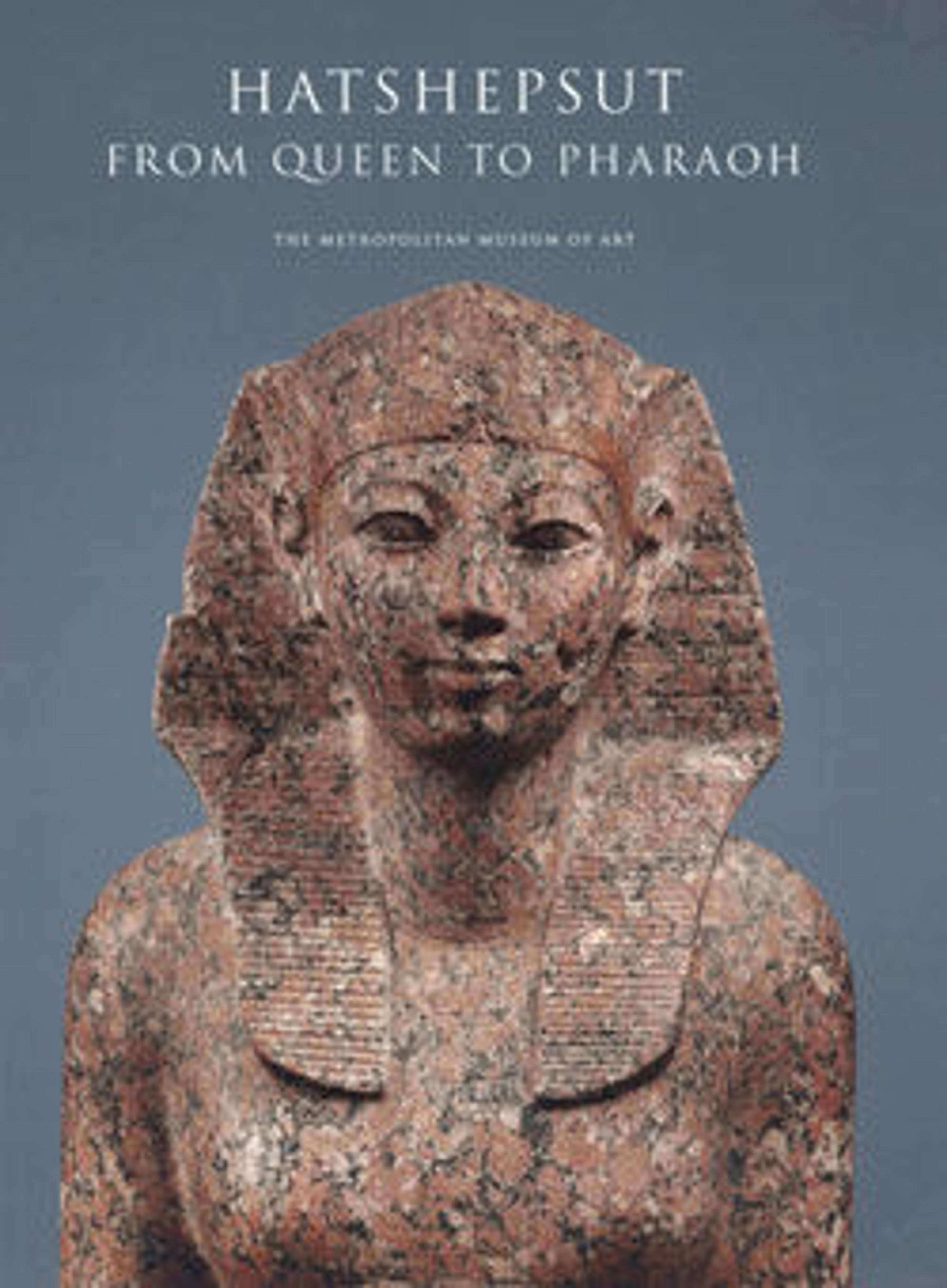Head of an Osiride Statue of Hatshepsut
This head belonged to a statue that represented Hatshepsut as Osiris, god of the underworld. It was one of four Osiride figures that decorated the sanctuary of Amun in her funerary temple at Deir el Bahri. This head and another in the collection (31.3.154) wear the White Crown of Upper Egypt and were originally at the southern end of the sanctuary. Another head in the collection (31.3.153) wears the Double Crown and came from the northern end.
The Osiride statues that decorated Hatshepsut's temple were "engaged" statues - in other words, they were attached to the temple itself. However, approximately 20 years after her death, the statues were hacked off the walls and smashed. The fragments were then thrown into a quarried area next to the temple causeway where they were discovered there during the Museum's excavations in the early Twentieth Century.
The Osiride statues that decorated Hatshepsut's temple were "engaged" statues - in other words, they were attached to the temple itself. However, approximately 20 years after her death, the statues were hacked off the walls and smashed. The fragments were then thrown into a quarried area next to the temple causeway where they were discovered there during the Museum's excavations in the early Twentieth Century.
Artwork Details
- Title: Head of an Osiride Statue of Hatshepsut
- Period: New Kingdom
- Dynasty: Dynasty 18
- Reign: Joint reign of Hatshepsut and Thutmose III
- Date: ca. 1479–1458 B.C.
- Geography: From Egypt, Upper Egypt, Thebes, Deir el-Bahri, Senenmut Quarry, in hole, MMA excavations, 1926–28; Probably originally from Temple of Hatshepsut, sanctuary, southwest corner
- Medium: Limestone, paint
- Dimensions: H. 36 cm (14 3/16 in)
- Credit Line: Rogers Fund, 1931
- Object Number: 31.3.155
- Curatorial Department: Egyptian Art
More Artwork
Research Resources
The Met provides unparalleled resources for research and welcomes an international community of students and scholars. The Met's Open Access API is where creators and researchers can connect to the The Met collection. Open Access data and public domain images are available for unrestricted commercial and noncommercial use without permission or fee.
To request images under copyright and other restrictions, please use this Image Request form.
Feedback
We continue to research and examine historical and cultural context for objects in The Met collection. If you have comments or questions about this object record, please contact us using the form below. The Museum looks forward to receiving your comments.
